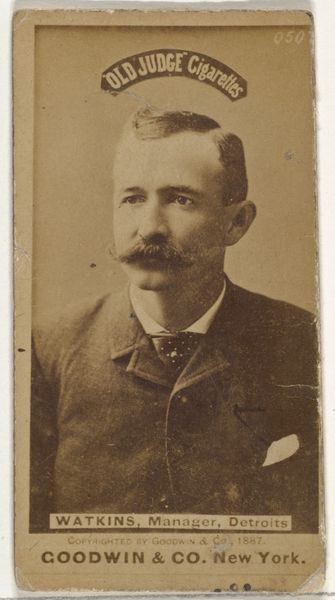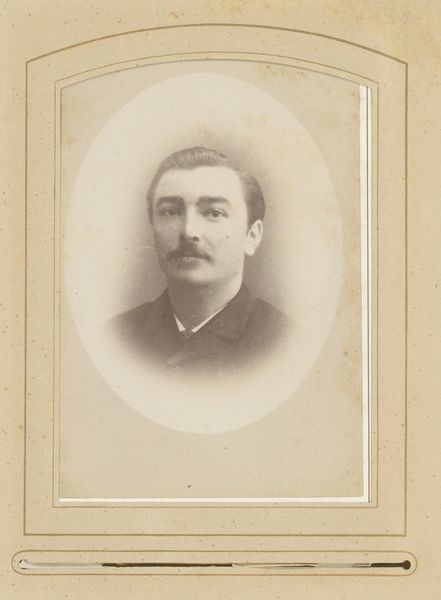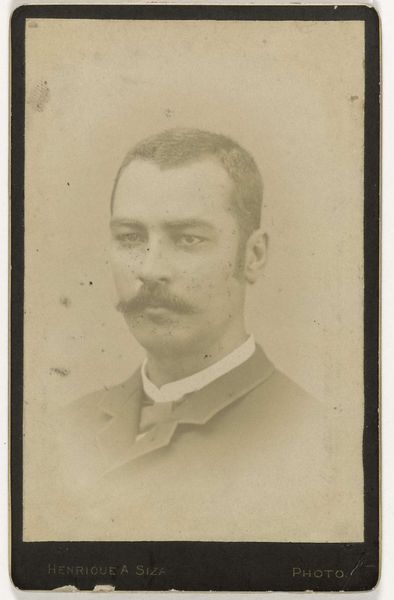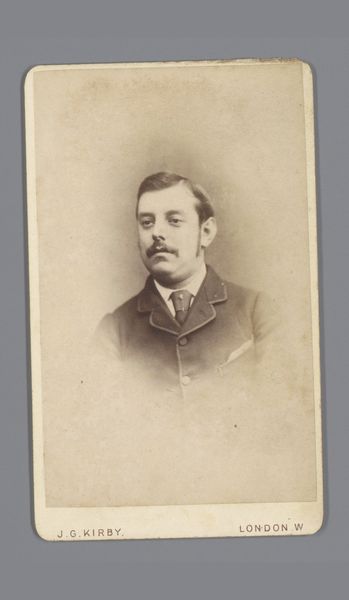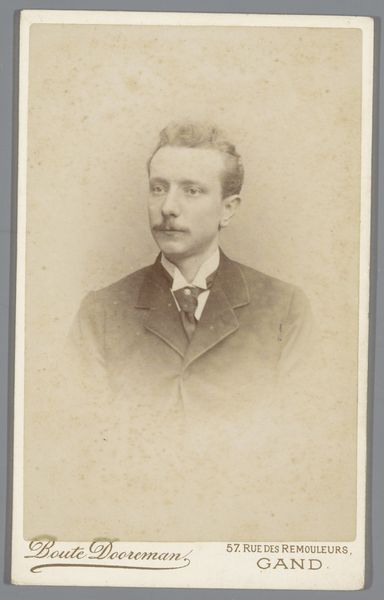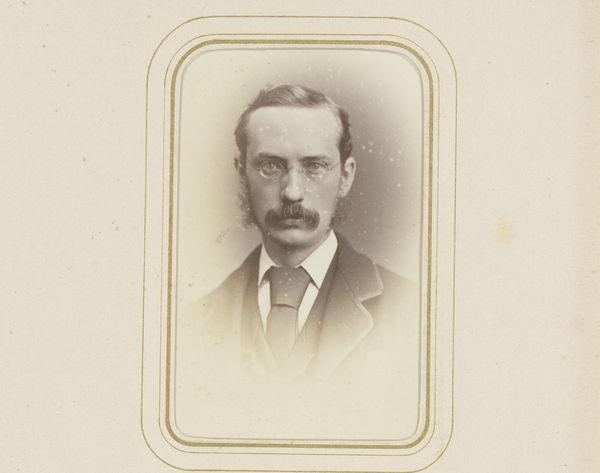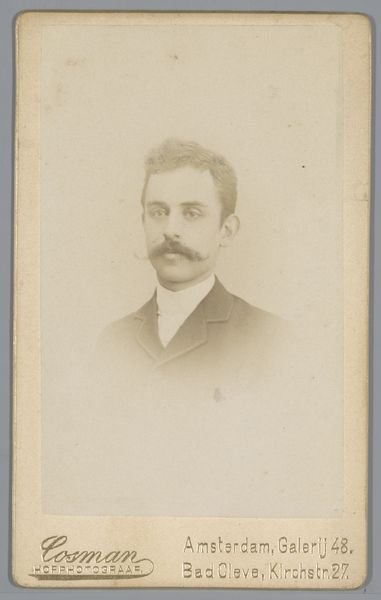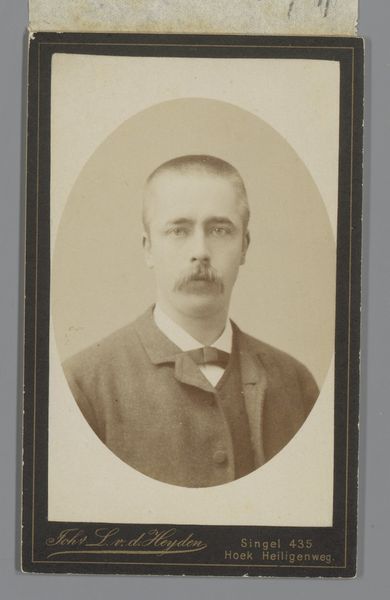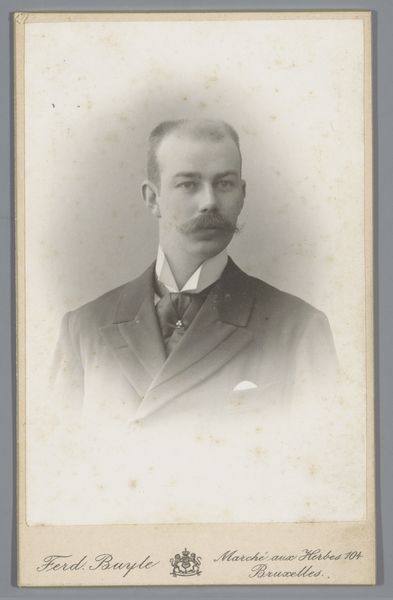
photography
#
portrait
#
photography
#
19th century
#
genre-painting
Dimensions: height 105 mm, width 64 mm
Copyright: Rijks Museum: Open Domain
Editor: So this is a portrait from the late 1880s by Wegner & Mottu. It's a photograph of an unknown man. It strikes me as rather formal and reserved. What do you see in this piece that might reveal something about the person or the context of the portrait? Curator: Beyond the sitter’s pose, I’m particularly interested in the conventions of 19th-century portrait photography. Who was being photographed and how? How were these images consumed? Consider this: photography offered a seemingly objective rendering of reality. However, the studio, the photographer, and the sitter's decisions all shaped the image and its cultural meaning. Could it be argued that these types of photographic portrait are the equivalent of today's social media profile pics? Editor: That's a great point. It's a constructed identity, much like social media. Do you think this format reinforced existing social hierarchies or perhaps allowed for a new kind of representation? Curator: It’s a complex situation. Initially, photographic portraits were costly, restricting access to the middle and upper classes. The studio portrait often served as a tool for social mobility, where people could project a specific persona. Later on in the 19th Century, things changed because technical advancement meant greater affordability. Consider what it might have meant to someone to be represented with dignity, particularly during times when negative, stereotypical images circulated widely. Editor: I never considered it from the perspective of identity and power. It's fascinating to think of these images as active participants in the construction of social identity. Curator: Indeed. It is a poignant reminder that art, in any form, is never neutral. Understanding the historical context is key to unpacking the layers of meaning.
Comments
No comments
Be the first to comment and join the conversation on the ultimate creative platform.


